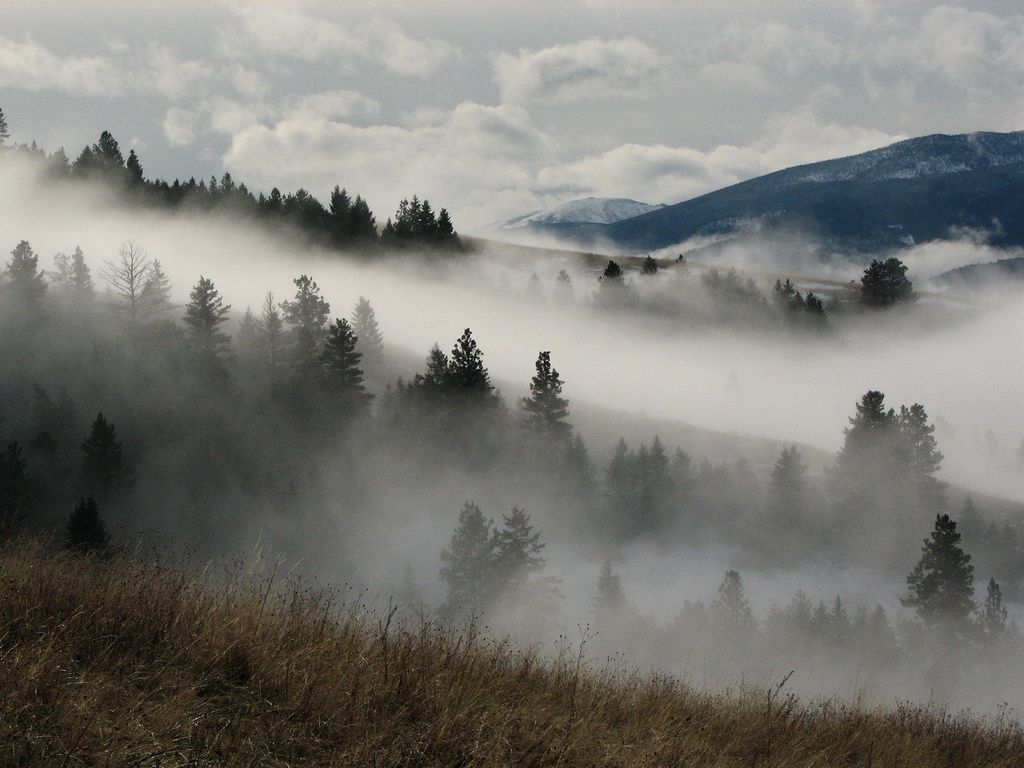Hailstones are far more than frozen rain—they are miniature masterpieces of nature, containing intricate layered structures that reveal the dramatic journey of their formation high within storm clouds. ❄️
The Hidden Beauty Frozen in Time
When we think of hail, most of us picture those annoying ice pellets that dent cars and damage crops. But slice a hailstone in half, and you’ll discover something remarkable: concentric rings of ice, alternating between clear and opaque layers, creating patterns as beautiful as tree rings or agate gemstones. These frozen spheres are natural ice sculptures, each one documenting the turbulent atmospheric conditions that created it.
The layered structure within hailstones isn’t just aesthetically pleasing—it’s a scientific record of the stone’s journey through different temperature zones and moisture levels within a thunderstorm. Understanding these patterns helps meteorologists predict severe weather, while artists and photographers have increasingly celebrated hailstones as examples of nature’s spontaneous art.
How Nature Builds These Frozen Masterpieces
The formation of hailstones is a complex dance between gravity and powerful updrafts within cumulonimbus clouds. It all begins with a tiny ice crystal or frozen raindrop—the embryo of what will become a hailstone. Strong updrafts, which can exceed 100 miles per hour in severe thunderstorms, carry this embryo upward into extremely cold regions of the cloud.
As the embryo travels through the cloud, it collects supercooled water droplets—liquid water that exists below freezing temperature but hasn’t yet solidified. When these droplets contact the ice embryo, they freeze instantly, adding a layer to the growing hailstone. The character of each layer depends on the conditions encountered during that particular phase of growth.
The Science Behind Clear vs. Opaque Layers
The alternating transparent and milky white layers within hailstones tell a story of varying growth conditions. When a hailstone passes through a region with abundant supercooled water droplets, the water freezes slowly, allowing air bubbles to escape. This creates clear, glassy ice layers that look almost like glass when examined closely.
Conversely, when the hailstone encounters areas with less moisture or when freezing happens rapidly, tiny air bubbles become trapped in the ice, creating opaque, white layers. These milky bands scatter light, giving the ice a cloudy appearance. The pattern and thickness of these layers create unique fingerprints for each hailstone, making every one genuinely one-of-a-kind.
The Vertical Journey: Up, Down, and Up Again
What makes hailstones particularly fascinating is their repetitive journey through the storm cloud. Unlike snowflakes that form and fall, hailstones can be lifted and dropped multiple times before finally falling to Earth. Each cycle through the updraft adds new layers, gradually increasing the stone’s size and weight.
Eventually, the hailstone becomes too heavy for even the most powerful updrafts to support, and gravity wins. The stone plummets to the ground, carrying with it a frozen record of its atmospheric adventure. Larger hailstones have experienced more cycles, which is why they display more complex layering patterns.
Record-Breaking Ice Sculptures from the Sky
The largest hailstone ever recorded in the United States fell in Vivian, South Dakota, in 2010. This monster measured 8 inches in diameter and weighed nearly 2 pounds. Imagine the cross-section of such a giant—dozens of layers, each representing a different phase of its formation. The updraft required to keep such a massive ice ball aloft must have been truly extraordinary, likely exceeding 150 miles per hour.
Other notable giant hailstones have fallen in Bangladesh, where a 1986 hailstorm reportedly produced stones weighing over 2 pounds, tragically killing 92 people. These extreme examples demonstrate both the power of nature and the complex atmospheric conditions required to create such large, heavily layered ice formations.
Viewing Hailstone Structures: A Window into Storm Dynamics 🔬
Scientists who study hailstones employ various techniques to examine their internal structures. The simplest method involves carefully cutting a hailstone in half while it’s still frozen, then photographing or sketching the revealed layers. More sophisticated approaches use thin sectioning techniques similar to those used in geology, where very thin slices are examined under polarized light.
These examinations reveal not just the number of layers, but also their crystalline structure. Ice crystals can be arranged in different patterns depending on formation conditions, providing additional clues about the storm environment. Some researchers even analyze the chemical composition of different layers, which can contain pollutants or dust particles picked up during the hailstone’s journey.
DIY Hailstone Investigation
If you’re lucky enough to experience a hailstorm (from a safe location indoors, of course), you can conduct your own simple investigation of hailstone structure. Here’s what you’ll need:
- Fresh hailstones collected immediately after the storm
- A sharp knife or saw
- A dark-colored plate or surface for viewing
- A magnifying glass or macro camera lens
- A freezer to keep specimens frozen during examination
- Proper safety equipment if handling large hailstones
Work quickly in a cold environment, as hailstones begin melting rapidly at room temperature. Make a clean cut through the center of the stone, then examine the cross-section against a dark background to see the layering clearly. Photograph your findings to preserve this ephemeral art before it melts away.
The Aesthetic Appeal of Frozen Architecture
Beyond their scientific value, hailstone cross-sections have captured the imagination of artists, photographers, and nature enthusiasts. The concentric patterns resemble abstract art, natural mandalas, or microscopic views of other natural phenomena. Some photographers have created stunning portfolios documenting the diversity of hailstone structures, revealing that no two stones are identical.
The interplay of light through clear and opaque layers creates visual depth and complexity. When backlit, larger hailstones can appear to glow from within, their layers creating subtle gradations of opacity. This natural beauty has inspired jewelry designers, glass artists, and even architects who seek to replicate these organic patterns in their work.
Photography Tips for Capturing Ice Layers ✨
Photographing hailstone cross-sections presents unique challenges due to the material’s transparency and rapid melting. Successful ice photography requires quick work and proper lighting. Backlighting reveals layer structure beautifully, while side lighting emphasizes surface texture and three-dimensional form.
Macro photography is essential for capturing the fine details of smaller hailstones. A dark, non-reflective background helps the ice stand out, and working in a cold environment or freezer prevents premature melting. Some photographers use colored gels or LED lights to add artistic interpretation to their scientific subjects, creating images that blur the line between documentation and art.
Climate Connections: What Hailstones Tell Us About Our Atmosphere
The structure of hailstones provides valuable data about atmospheric conditions, and scientists are increasingly interested in how hail patterns might change in a warming climate. Counterintuitively, some climate models suggest that while the overall frequency of hailstorms might decrease in certain regions, the severity of individual storms could increase, potentially producing larger, more complex hailstones.
The layering patterns in hailstones collected over decades can serve as a historical record of storm intensity and atmospheric composition. Trapped air bubbles and chemical traces in the ice layers provide snapshots of air quality and atmospheric conditions at the time of formation, similar to how ice cores reveal ancient climate data.
Hail Around the World: Regional Variations in Ice Art
Different regions experience different types of hail events, influenced by local geography, typical storm patterns, and seasonal variations. The Great Plains of North America, known as “Hail Alley,” experiences frequent severe hailstorms during spring and early summer, producing some of the most impressively layered stones.
In tropical regions, hail is less common but can occur in severe convective storms. These stones often have fewer but thicker layers, reflecting the different vertical structure of tropical thunderstorms compared to their mid-latitude counterparts. Mountain regions can produce unusual hailstones due to complex wind patterns and varied terrain influences on storm development.
Notable Hail Regions and Their Characteristics
| Region | Frequency | Typical Size | Layer Characteristics |
|---|---|---|---|
| U.S. Great Plains | High (Spring/Summer) | Pea to Baseball | Multiple thin layers, complex patterns |
| Northern India/Bangladesh | Moderate (Pre-monsoon) | Marble to Softball | Fewer, thicker layers |
| Argentine Pampas | Very High | Pea to Golf Ball | Dense layering, rapid growth patterns |
| European Alps | Moderate (Summer) | Small to Medium | Irregular layers due to complex winds |
The Cultural Significance of Hail Through History
Throughout human history, hail has been viewed with a mixture of awe, fear, and fascination. Ancient cultures often attributed supernatural significance to these ice stones falling from summer skies. Some societies saw hail as divine punishment, while others recognized it as a natural phenomenon worthy of study and respect.
Today, while we understand the meteorological processes behind hail formation, the beauty revealed in their cross-sections continues to inspire wonder. Modern artists have incorporated hailstone imagery into various media, from sculpture to digital art, celebrating these temporary ice architectures as examples of nature’s spontaneous creativity.
Protecting What You Love: Hail Safety and Awareness 🛡️
While appreciating the beauty of hailstone structures, it’s crucial to respect the danger they can pose. Large hail causes billions of dollars in damage annually and can cause serious injuries or even fatalities. Understanding hail formation and structure goes hand-in-hand with staying safe during severe weather events.
Modern weather forecasting has improved significantly, with radar technology capable of detecting hail signatures within storms. Weather apps and services can provide timely warnings, giving people precious minutes to seek shelter. When a hail warning is issued, the best place to be is indoors, away from windows, preferably in an interior room or basement.
Appreciating Nature Safely
The desire to collect and examine hailstones is understandable—they are fascinating natural objects. However, never venture outside during active hail fall, no matter how small the stones may appear. Hail can increase in size rapidly, and being struck by even golf-ball-sized hail can cause serious injury.
Wait until the storm has completely passed, then collect your specimens. Large hailstones should be handled with care, as their irregular surfaces can have sharp edges. Store them immediately in a freezer if you plan to examine them later, and work quickly when making cross-sections, as room temperature will melt your subject within minutes.
The Future of Hail Research and Appreciation
Advances in technology continue to enhance our ability to study and appreciate hailstone structures. High-resolution CT scanning allows researchers to examine internal structures without cutting the stone, preserving specimens for future study. Computer modeling helps scientists understand the complex interactions between updrafts, moisture, and temperature that create different layering patterns.
Citizen science initiatives are increasingly involving weather enthusiasts in hail research. Programs encourage people to photograph, measure, and report hail occurrences, contributing to databases that help meteorologists understand hail patterns across wider areas than professional networks can cover alone.
Embracing the Ephemeral Art Gallery in the Sky
Perhaps what makes hailstone structures so compelling is their temporary nature. These intricate layered patterns exist for only a brief time—from formation in the storm to melting on the ground. Each stone is a unique creation, formed under specific conditions that will never be exactly replicated, then lost forever as the ice returns to liquid water.
This ephemeral quality connects hailstones to other temporary natural art forms—frost patterns on windows, snowflakes, sand ripples before the tide. They remind us that nature constantly creates beauty, often in unexpected places and forms. The next time hail falls, remember that each stone contains hidden patterns, a frozen moment of atmospheric drama, and a small masterpiece of nature’s art. 🌨️
By taking time to examine these icy visitors, we gain not just scientific knowledge but a deeper appreciation for the complexity and beauty inherent in even the most commonplace natural phenomena. Hailstones invite us to slow down, look closer, and discover that nature’s art gallery is always open—we just need to know where to look.
Toni Santos is a visual storyteller and artisan whose creations celebrate the poetry of the natural world. Through his thoughtful artistic lens, Toni captures the elegance of botanical forms, transforming them into meaningful expressions of symbolism, resilience, and timeless beauty.
His journey is deeply rooted in a passion for flora and the mysteries they carry. From the shape of a petal to the curve of a vine, each design Toni brings to life reflects a deeper narrative — one of growth, transformation, and harmony with nature. Whether crafting symbolic floral jewelry, enchanted botanical illustrations, or seasonal visual studies, Toni’s work evokes the quiet magic found in Earth’s most delicate details.
With a background in handcrafted artistry and visual design, Toni blends technique with intention. His creations do more than decorate — they speak, often inspired by ancient meanings behind flowers, the cycles of the seasons, and the invisible bonds between nature and spirit.
As the creative voice behind Vizovex, Toni shares this botanical journey with the world, offering curated stories, handcrafted collections, and thoughtful articles that help others reconnect with nature’s symbolism and artistic essence.
His work is a tribute to:
The quiet power of flowers and their messages
The art of visual symbolism in everyday life
The beauty of slowing down to see what’s hidden in plain sight
Whether you’re an artist, a nature lover, or someone drawn to the deeper meanings behind the natural world, Toni welcomes you to explore a space where aesthetics meet soul — one petal, one story, one creation at a time.





